Industrial Internet of Things: Use Cases and IPv4 Addressing Challenges
Explore the promising trajectory of the Industrial Internet of Things (IIoT) and the vital IPv4-IPv6 transition for ensuring sustainable innovation.
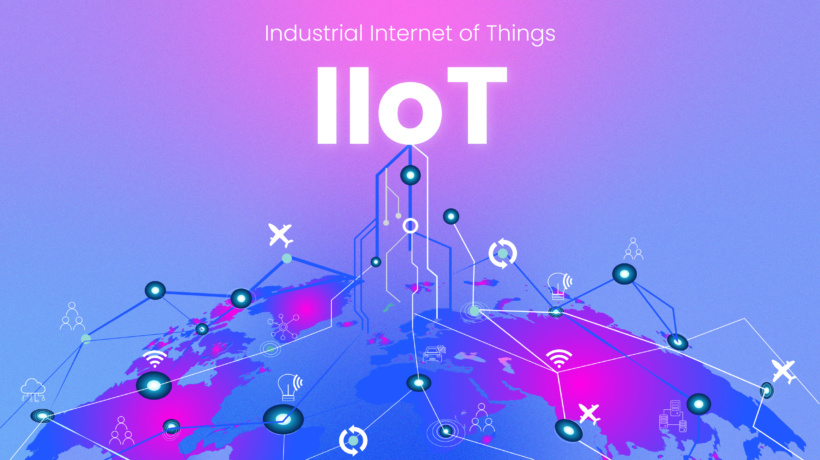
The Industrial Internet of Things (IIoT) is reshaping the global business landscape through its transformative impact. By interconnecting physical entities such as machines, vehicles, and devices, IIoT enables the collection of data and derivation of insights through analytics.
An annual IEEE survey engaged distinguished global figures – chief information officers, chief technology officers, and technology leaders – to gain insights into pivotal technology trends, priorities, and predictions for 2023 and beyond, revealing that IIoT stands out one of the top five most influential technologies.
When implemented within industrial environments, the potential of IIoT shines even brighter, driving significant advancements in operational efficiency, productivity, safety, and cost savings across sectors like manufacturing, energy, logistics, utilities, and healthcare.
Projections from Statista accentuate the impact of Industrial IoT, with an estimated worldwide market size expected to reach $686.46 billion in 2023. However, the swift proliferation of internet-connected devices also brings to the forefront a critical challenge – the constraints of legacy IPv4 networking protocols in accommodating the exponential growth of IIoT deployments.
Key takeaways
- The rapid growth of Internet of Things (IoT) and Industrial Internet of Things (IIoT) is exposing IPv4’s constrained address space, unable to handle the increasing number of connected devices.
- IPv6 emerges as the long-term solution for sustaining the expansion of IIoT, as its notably expanded address space and enhanced features enable the accommodation of the projected growth in both IoT and IIoT deployments.
- Although the widespread adoption of IPv6 is progressing gradually, encouraging signs of growth momentum are evident, particularly within cellular networks, and IPv4 leasing further complements the IPv6 transition by providing adaptable access to IP resources, enhancing the capacity to future-proof IIoT implementations.
Industrial IoT use cases
Industrial IoT implementation enables industries to achieve significant improvements in productivity, operational efficiency, safety and cost savings. Here are some examples of IIoT use cases across various industrial sectors:
Manufacturing
- Predictive maintenance: Manufacturers use sensor data to analyze equipment performance, predicting maintenance needs and reducing downtime and costs
- Inventory tracking: IoT-connected products and assets offer real-time inventory visibility across the production line, improving efficiency and preventing losses
Energy & Utilities
- Smart grids: Two-way communication enabled by IoT modernizes grids, monitoring energy usage patterns through smart meters and optimizing power distribution
- Asset monitoring: Sensors in generation assets like turbines track real-time performance, optimizing efficiency and scheduling predictive maintenance
Logistics & Transportation
- Fleet tracking: IoT networks track vehicles and assets in real-time, enhancing visibility and improving asset utilization and delivery efficiency
- Inventory management: Logistics firms manage and track inventory seamlessly across the supply chain using location tracking and inventory sensors
Healthcare
- Medical asset tracking: Critical medical equipment is tracked in real-time, ensuring availability and preventing losses in healthcare facilities
- Patient monitoring: Wearables monitor patient health parameters and transmit alerts during critical conditions, enabling quick interventions
Agriculture
- Precision farming: Sensors in fields monitor soil moisture, temperature, and crop health, allowing farmers to optimize irrigation and apply fertilizers more effectively
- Livestock management: IIoT devices track animal health and behavior, aiding in disease detection and improving livestock management
These devices are linked to each other through IP addresses, enabling seamless communication and data exchange. However, the protocol version they have been using is now decades old. As the number of connected devices continues to surge, the limitations of IPv4 are becoming more apparent.
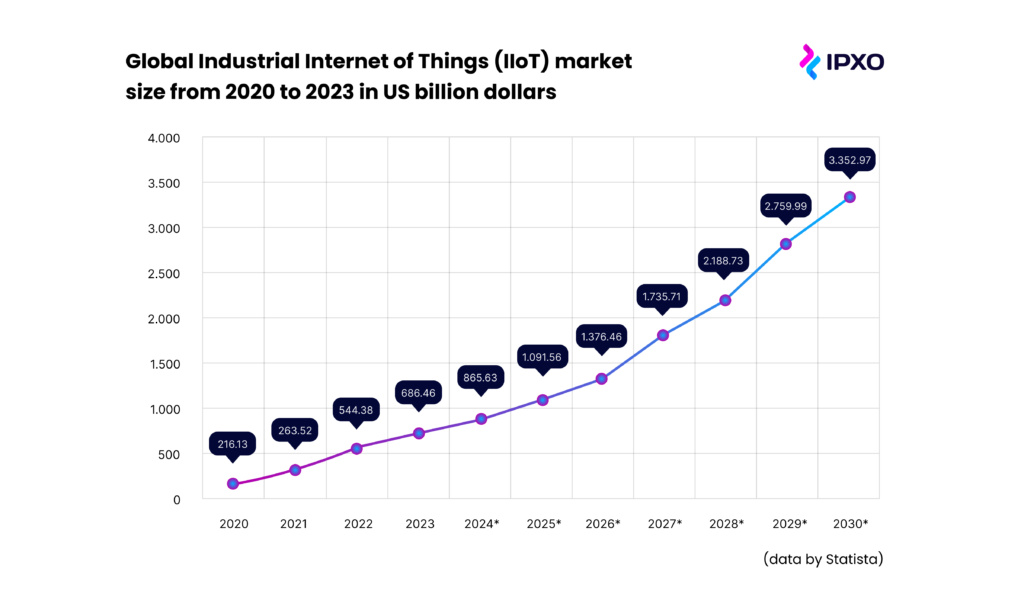
IPv4: The foundation of IoT addressing
IPv4, short for Internet Protocol version 4, provides the basic mechanism that assigns and identifies each device with a unique IP address to enable communication over the internet. It has been a foundational protocol powering the internet since its beginnings in 1983. However, the rapid expansion of the Industrial IoT poses a threat to this long-standing system.
IPv4 uses 32-bit addresses which limit it to around 4.3 billion possible address combinations. While that seemed abundant in the early days of the internet, we are reaching address exhaustion today. The explosion of smartphones and now IoT devices connecting to networks is driving huge address consumption.
Industry estimates predict over 19 billion actively connected IoT devices by 2025, with continued hypergrowth beyond that. This surge presents a formidable challenge for the legacy IPv4 protocol, which was not designed to accommodate the scale of modern internet-connected endpoints.
Address scarcity cripples scaling
For any Industrial IoT use case, be it automating production lines, monitoring energy assets or tracking supply chains, a key prerequisite is assigning each interconnected device or sensor a unique IP address. Only then can data from each endpoint flow securely to centralized analytics systems.
But IPv4 has a limited pool of around 4.29 billion addresses. IIoT growth will rapidly consume this scarce resource. IPv4 scarcity is already driving up costs for businesses looking to acquire additional addresses. Workarounds like dynamic address sharing through Network Address Translations (NAT) provide temporary relief but add layers of complexity.
Without sufficient addressing, Industrial IoT scaling will hit a roadblock. First movers who adopt IPv6 will gain a competitive advantage in deploying IIoT use cases and leveraging advanced analytics.
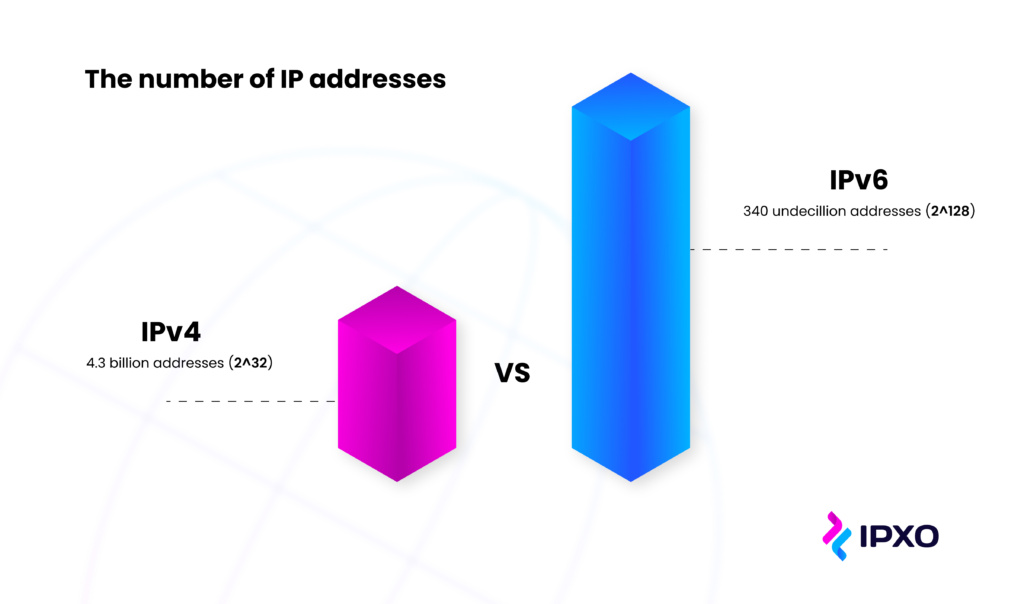
The promise and potential of IPv6
To sustain the expansion of Industrial IoT, IPv6 has emerged as a viable long-term solution. This next generation of the Internet Protocol, standardized in 2017, massively expands the address space using 128-bit identifiers.
The exponentially larger address capacity of IPv6 effectively removes addressing constraints. It can provide a unique ID for every atom on the surface of the earth for billions of years. This virtually unlimited scope can comfortably accommodate the projected growth of IoT and IIoT deployments.
Beyond addressing, IPv6 also improves speed and simplifies network management through optimized header formats. Built-in end-to-end encryption and authorization enhances security. It removes cumbersome NAT traversal issues by providing globally routable addresses. These enhancements make IPv6 ideal for IIoT needs.
Therefore, cellular networks have rapidly adopted IPv6, enabling things like VoLTE. IPv6-only IoT equipment and networks are on the rise as well. Proactively planning the transition can help future proof IIoT implementations.
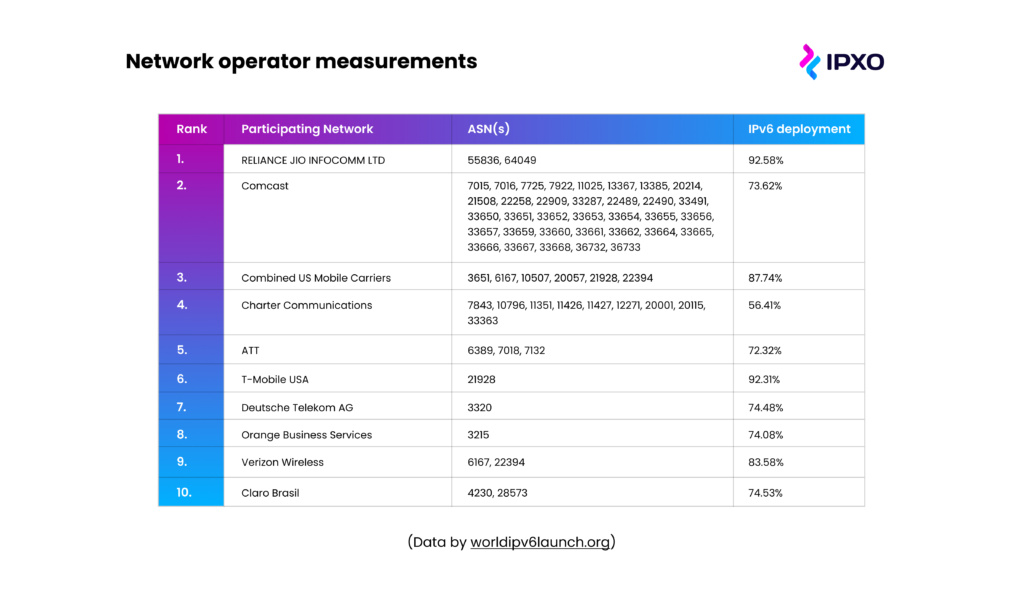
The growth trajectory of IPv6
Despite the benefits, overall adoption of IPv6 remains gradual. Nevertheless, there are promising indicators of growth momentum.
Cellular networks have seen rapid IPv6 adoption, with leading operators like Verizon and AT&T already surpassing 83.5% and 72% IPv6 traffic, respectively. Critical infrastructure like VoLTE relies completely on IPv6. Leading device manufacturers are also adding dedicated hardware support for IPv6 features like neighbor discovery and auto-configuration to remove firmware complexities.
Studies show that various organizations are now piloting or implementing IPv6 projects. And over 40% of all Google users now access it via IPv6. With the pressure of IPv4 address scarcity, IPv6 is expected to be the fastest adopted internet standard, outpacing predecessors like IPv4 and Ethernet.
IPv4 leasing as a complementary solution
In conjunction with the adoption of IPv6, IPv4 leasing has emerged as a strategy that provides organizations with the flexibility to secure additional IPv4 addresses as needed, without the constraints of purchasing scarce IPv4 allotments.
Esteemed entities like Amazon, Microsoft, and Google have embraced IPv4 leasing to facilitate the acceleration of cloud growth while concurrently smoothing the path to IPv6 transition. The IPv4 lease subscription model offers adaptable access to addresses, effectively minimizing upfront expenses and ensuring uninterrupted connectivity.
Empowered by robust address management platforms, organizations can even automate the processes of leasing, allocation, and updates within the Internet Routing Registry due to IPv4 providers such as IPXO. When thoughtfully integrated with IPv6 adoption, IPv4 leasing serves as a practical instrument for ensuring the future readiness of IIoT deployments.

Monetize and lease IPv4 addresses with IPXO
Navigating the IPv6 transition strategies
For most enterprises, a dual-stack transitional strategy that runs IPv4 and IPv6 concurrently offers the simplest path forward. This keeps existing systems functional while allowing a phased upgrade to IPv6 capability across equipment, networks and software.
Furthermore, just as Regional Internet Registries (RIRs) have adeptly managed the allocation and distribution of IPv4 addresses, they have also taken up the responsibility of overseeing IPv6 resources. This commitment is evident in the graph below, which showcases the progressive utilization of IPv6 addresses by RIRs.

Other complementary measures like consolidating IPv4 address allocations, deploying hybrid translation technologies like NAT64 and DNS64, and testing IPv6-only greenfield deployments can further smooth the migration.
Outsourcing address management and interworking complexity to managed service providers is an option but reduces user control. The most sustainable solution remains comprehensive in-house IPv6 capabilities covering infrastructure, devices, networks and skills.
Proactive planning is key
The relentless surge of the IoT and Industrial IoT wave continues, with projections foreseeing nearly 30 billion active devices by 2030. While transitional strategies offer short-term respite, the enduring solution lies in IPv6, offering the sole viable path forward. Visionary industry leaders recognize this reality and are already strategically integrating IPv6 capabilities into their technology roadmaps.
Moreover, the emergence of IPv4 leasing presents a complementary breakthrough in harmony with the IPv6 transition. IPv4 leasing addresses the immediate need for additional addresses, facilitates cloud expansion, and streamlines the shift to IPv6. By seamlessly weaving IPv4 leasing into the fabric of IPv6 adoption, forward-looking organizations can optimally position themselves to harness the full potential of Industrial IoT.
By embracing proactive measures and shunning delay, enterprises can adeptly navigate the intricate realm of IP addressing while keeping their sights set on propelling Industrial IoT use cases that genuinely set them apart in the competitive landscape. The symbiotic journey of IIoT and the IPv4-IPv6 transition exemplifies the convergence of networking infrastructure with business innovation, paving the way for sustainable growth in the ever-evolving digital frontier.
Ready to embrace the future?
FAQs about Industrial IoT
IoT (Internet of Things) and IIoT (Industrial Internet of Things) both involve connecting devices to the internet for data exchange, but they differ in their scope and application. IoT refers to the interconnected network of everyday devices and objects, such as smart home appliances, wearable gadgets, and consumer electronics, aimed at enhancing convenience and lifestyle. On the other hand, IIoT is a subset of IoT specifically focused on industrial applications. IIoT involves connecting machinery, equipment, and sensors within industries such as manufacturing, energy, healthcare, and transportation to improve operational efficiency, optimize processes, enable predictive maintenance, and enhance safety.
IIoT can be used in various sectors, for example, manufacturing, energy, logistics, and healthcare. These devices can detect equipment performance, monitor energy consumption patterns, track vehicle locations, and remotely monitor patient health parameters.
Edge computing involves processing data closer to the data source, reducing latency and enabling real-time decision-making. This is particularly important for time-sensitive applications like industrial automation and remote monitoring. On the other hand, cloud computing centralizes data storage, processing, and analysis in remote data centers, allowing for scalable storage, advanced analytics, and long-term data insights. Both edge and cloud computing complement each other in IIoT by optimizing data processing at the source and enabling deeper analytics and storage capabilities in the cloud. This hybrid approach ensures efficient and effective management of the vast amount of data generated by IIoT devices.
IPv6, the next generation of Internet Protocol, offers a significantly larger address space (about 340 undecillion addresses) compared to IPv4. This expansion addresses the limitations of IPv4 and provides ample unique addresses to accommodate the projected growth of IIoT devices. IPv6 also offers enhanced security features and simplified network management.
IPv4 leasing is an innovative solution that allows organizations to lease additional IPv4 addresses on-demand instead of purchasing them. This approach helps organizations address the IPv4 scarcity issue while transitioning to IPv6. IPv4 leasing, when integrated with IPv6 adoption, provides a flexible and practical way to ensure the future readiness of IIoT deployments, minimizing disruptions during the transition phase.
About the author
Table of contents
Key takeaways
Industrial IoT use cases
Manufacturing
Energy & Utilities
Logistics & Transportation
Healthcare
Agriculture
IPv4: The foundation of IoT addressing
Address scarcity cripples scaling
The promise and potential of IPv6
The growth trajectory of IPv6
IPv4 leasing as a complementary solution
Navigating the IPv6 transition strategies
Proactive planning is key
FAQs about Industrial IoT
Related reading
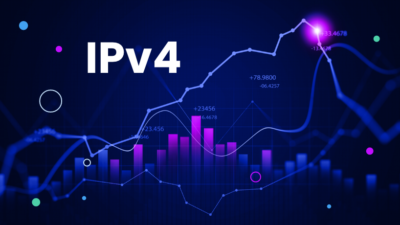
The Rising Value of IP Addresses as a Global Commodity
The interaction between IP address sale prices and the broader economic landscape not only emphasizes the perceived financial value of these digital assets but also uncovers a link between…
Read more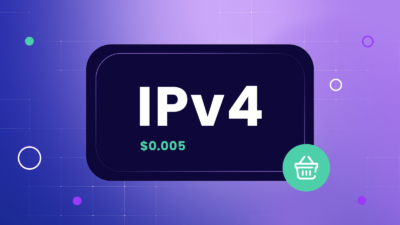
Opinion: AWS Sets the ROI Benchmark for IP Addresses
Explore the significance of Amazon Web Service's new IPv4 pricing model - a paradigm shift in IP address leasing rates.
Read more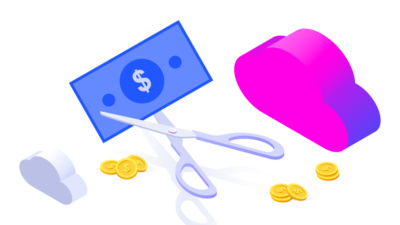
Cloud Spending: How To Reduce Expenses on a Budget
Although global cloud spending is increasing, companies are looking for ways to cut down the costs. Discover why IP leasing is a solution worth exploring.
Read moreSubscribe to the IPXO email and don’t miss any news!
